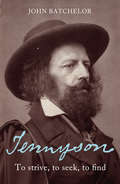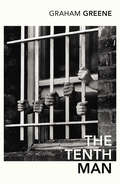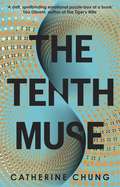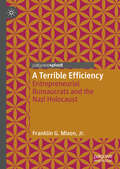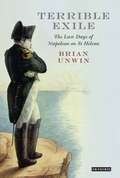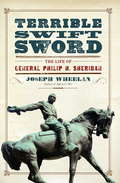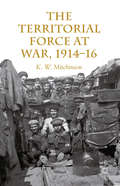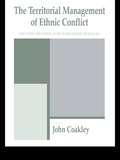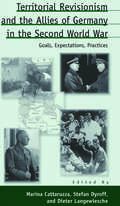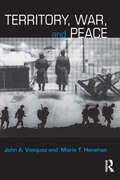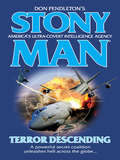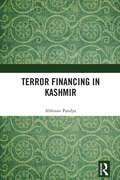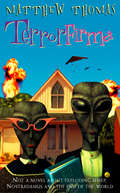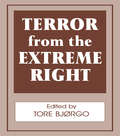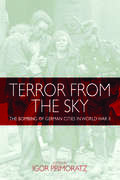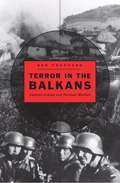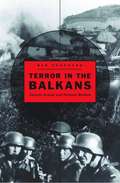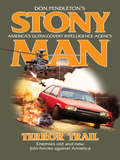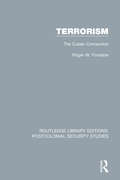- Table View
- List View
Tennyson: To Strive, to Seek, to Find
by John BatchelorAlfred Lord Tennyson, Queen Victoria’s favourite poet, commanded a wider readership than any other of his time. His ascendancy was neither the triumph of pure genius nor an accident of history:he skilfully crafted his own career and his relationships with his audience. Fame and recognition came, lavishly and in abundance, but the hunger for more never left him. Like many successful Victorians, he was a provincial determined to make good in the capital while retaining his regional strengths. One of eleven children, he remained close to his extended family and never lost his Lincolnshire accent.Resolving never to be anything except ‘a poet’, he wore his hair long, smoked incessantly and sported a cloak and wide-brimmed Spanish hat.Tennyson ranged widely in his poetry, turning his interests in geology, evolution and Arthurian legend into verse, but much of his workrelates to his personal life. The tragic loss of Arthur Hallam, a brilliant friend and fellow Apostle at Cambridge, fed into some of his most successful and best-known poems. It took Tennyson seventeen years to complete his great elegy for Hallam, In Memoriam, a work which established his fame and secured his appointment as Poet Laureate.The poet who wrote The Lady of Shalott and The Charge of the Light Brigade has become a permanent part of our culture. This enjoyable and thoughtful new biography shows him as a Romantic as well as a Victorian, exploring both the poems and Tennyson’s attempts at play writing, as well as the pressures of his age and the personal relationships that made the man.
The Tenth Man (Penguin Twentieth Century Classics)
by Graham GreeneIn a prison in Occupied France one in every ten men is to be shot. The prisoners draw lots among themselves - and for rich lawyer Louis Chavel it seems that his whole life has been leading up to an agonising and crucial failure of nerve. Hysterical with panic, fear, and a sense of injustice, he offers to barter everything he owns for someone to take his place. Graham Greene wrote The Tenth Man in 1944, when he was under a two-year contract to Metro-Goldwyn-Mayer, and the manuscript lay forgotten in MGM's archives until 1983. It was published two years later with an introduction by the author.
The Tenth Muse: A Novel
by Catherine Chung'The Tenth Muse is as ambitious and intriguing as the complex math problems Katherine, the protagonist of this remarkable novel, aims to solve. In this novel - the scope of which is staggering - Chung has crafted a story that is moving, elegant and richly written. Her prose, as it unfolds, becomes an elusive equation readers will yearn to solve' Roxane GayFrom childhood, Katherine knows she is different, and that her parents are not who they seem to be. But in becoming a mathematician, she faces the most human of problems - who is she? What is the cost of love, and what is the cost of ambition? On her quest to conquer the Riemann hypothesis, the greatest unsolved mathematical problem of her time, she turns to a theorem with a mysterious history that holds both the lock and key to her identity, and to secrets long buried during World War II. Forced to confront some of the biggest events of the twentieth century and rethink everything she knows of herself, Katherine strives to take her place in the world of higher mathematics, reclaiming the voices of the women who came before her whose love of the language of numbers connects them across generations.The Tenth Muse is a brilliant, involving novel asking questions about who gets to tell the story of intellectual endeavour, and about those who lost everything during World War II.Praise for The Tenth Muse'Arresting in scope and its treatment of time, its prose at turns crystalline and richly balletic, this story pulls puzzle from puzzle - human, historical and all too contemporary' Helen Oyeyemi'A deft, spellbinding emotional puzzle-box of a book' Téa Obreht
A Terrible Efficiency: Entrepreneurial Bureaucrats and the Nazi Holocaust
by Franklin G. Mixon, Jr.This book provides numerous examples that apply the modern theory of bureaucracy developed in Breton and Wintrobe (1982 and 1986) to the Nazi Holocaust. More specifically, the book argues, as do Breton and Wintrobe (1986), that the subordinates in the Nazi bureaucracy were not “following orders” as they claimed during the war crimes trials at Nuremberg and elsewhere, but were instead exhibiting an entrepreneurial spirit in competing with one another in order to find the most efficient way of exacting the Final Solution. This involved engaging in a process of exchange with their superiors, wherein the subordinates offered the kinds of informal services that are not codified in formal contracts. In doing so, they were competing for the rewards, or informal payments not codified in formal contracts, that were conferred by those at the top of the bureaucracy. These came in the form of rapid promotion, perquisites (pecuniary and in-kind), and other awards. The types of exchanges described above are based on “trust,” not formal institutions.
Terrible Exile: The Last Days of Napoleon on St Helena
by Brian UnwinAt its height, the Napoleonic Empire spanned much of mainland Europe. Feted and feared by millions of citizens, Napoleon was the most powerful and famous man of his age. But following his defeat at the Battle of Waterloo the future of the one-time Emperor of France seemed irredeemably bleak. How did the brilliant tactician cope with being at the mercy of his captors? How did he react to a life in exile on St Helena - and how did the other inhabitants of that isolated and impregnable island respond to his presence there? And what tactics did he develop to preserve his legacy in such drastically reduced circumstances? Tracing events from the dramatic defeat at Waterloo to his death six years later, this is the first modern comprehensive account of the last phase of Napoleon's life. Drawing on many previously overlooked journals and letters, Brian Unwin has pieced together a remarkably vivid account of Napoleon's final years which also offers fresh insights into the character of this giant of European history.Through his initial flight from the battlefield and his journey into exile on St Helena, Napoleon refused to accept that he would not be allowed to return to somewhere in Europe or even America. He railed against every aspect of his imprisonment and conspired to make life as difficult as possible for his unfortunate jailer, Hudson Lowe, whose impossible situation is sympathetically described here. Confined with him in the damp and confined Longwood House, life was also uncomfortable for those loyal companions who chose to journey with him into exile. Unsurprisingly for such a man of action, Napoleon bitterly resented being under constant supervision when he ventured outside his house and suffered acutely from boredom as much as from his physical ailments. Contrary to the strict wishes of the English he refused to accept any diminution in his status: 'Je ne suis pas le General Bonaparte, je suis L'Empereur Napoleon.'But gradually Napoleon came to think less about escape and more about how he would be remembered by future generations, spending hour after hour dictating the story of his campaigns to Count Las Cases, the companion who had travelled with him chiefly to act as his amanuensis. Terrible Exile brilliantly evokes the claustrophobic atmosphere of life on St Helena, offering a colourful and original history of the period as well as a persuasive psychological portrait of a great man in reduced circumstances. It will be essential reading for anyone with an interest in Napoleonic history and is an important addition to our understanding of the subject.
Terrible Swift Sword: The Life of General Philip H. Sheridan
by Joseph WheelanAlongside Ulysses S. Grant and William Tecumseh Sherman, Philip H. Sheridan is the least known of the triumvirate of generals most responsible for winning the Civil War. Yet, before Sherman&’s famous march through Georgia, it was General Sheridan who introduced scorched-earth warfare to the South, and it was his Cavalry Corps that compelled Robert E. Lee&’s surrender at Appomattox Courthouse. Sheridan&’s innovative cavalry tactics and &“total war&” strategy became staples of twentieth-century warfare.After the war, Sheridan ruthlessly suppressed the raiding Plains Indians much as he had the Confederates, by killing warriors and burning villages, but he also defended reservation Indians from corrupt agents and contractors. Sheridan, an enthusiastic hunter and conservationist, later ordered the US cavalry to occupy and operate Yellowstone National Park to safeguard it from commercial exploitation.
Terrible Swift Sword: The Life of General Philip H. Sheridan
by Joseph WheelanAlongside Ulysses S. Grant and William Tecumseh Sherman, Philip H. Sheridan is the least known of the triumvirate of generals most responsible for winning the Civil War. Yet, before Sherman's famous march through Georgia, it was General Sheridan who introduced scorched-earth warfare to the South, and it was his Cavalry Corps that compelled Robert E. Lee's surrender at Appomattox Courthouse. Sheridan's innovative cavalry tactics and "total war" strategy became staples of twentieth-century warfare. After the war, Sheridan ruthlessly suppressed the raiding Plains Indians much as he had the Confederates, by killing warriors and burning villages, but he also defended reservation Indians from corrupt agents and contractors. Sheridan, an enthusiastic hunter and conservationist, later ordered the US cavalry to occupy and operate Yellowstone National Park to safeguard it from commercial exploitation.
The Territorial Force at War, 1914-16
by W. MitchinsonWilliam Mitchinson analyses the role and performance of the Territorial Force during the first two years of World War I. The study looks at the way the force was staffed and commanded, its relationship with the Regular Army and the War Office, and how most of its 1st Line divisions managed to retain and promote their local identities.
The Territorial Management of Ethnic Conflict (Routledge Studies in Federalism and Decentralization)
by John CoakleyThe object of this book is to look at the manner in which states attempt to cope with ethnic conflict through territorial approaches. This revised edition has new chapters covering Northern Ireland, South Africa and Yugoslavia.
The Territorial Management of Ethnic Conflict (Routledge Studies in Federalism and Decentralization)
by John CoakleyThe object of this book is to look at the manner in which states attempt to cope with ethnic conflict through territorial approaches. This revised edition has new chapters covering Northern Ireland, South Africa and Yugoslavia.
Territorial Revisionism and the Allies of Germany in the Second World War: Goals, Expectations, Practices (Austrian and Habsburg Studies #15)
by Marina Cattaruzza Stefan Dyroff Dieter LangewiescheA few years after the Nazis came to power in Germany, an alliance of states and nationalistic movements formed, revolving around the German axis. That alliance, the states involved, and the interplay between their territorial aims and those of Germany during the interwar period and World War II are at the core of this volume. This “territorial revisionism” came to include all manner of political and military measures that attempted to change existing borders. Taking into account not just interethnic relations but also the motivations of states and nationalizing ethnocratic ruling elites, this volume reconceptualizes the history of East Central Europe during World War II. In so doing, it presents a clearer understanding of some of the central topics in the history of the war itself and offers an alternative to standard German accounts of the period and East European national histories.
Territory, War, and Peace
by John A. Vasquez Marie T. HenehanThis book presents a collection of new and updated essays on what has come to be known as the territorial explanation of war.The book argues that a key both to peace and to war lies in understanding the role territory plays as a source of conflict and inter-group violence. Of all the issues that spark conflict, territorial disputes have the highest probability of escalating to war. War, however, is hardly inevitable; much depends on how territorial issues are handled. More importantly, settling territorial disputes and establishing mutually recognized boundaries can produce long periods of peace between neighbors, even if other salient issues arise. While territory is not the only cause of war and wars arise from other issues, territory is one of the main causes of war, and learning how to manage it, can, in principle, eliminate an entire class of wars. This book will be of great interest to all students of war and conflict studies, causes of war and peace, international security and strategic studies.John A. Vasquez is Thomas B. Mackie Scholar in International Relations at the University of Illinois, Urbana-Champaign. He is author of The Steps to War (2008) (with Paul Senese) and The War Puzzle Revisited (2009). He has been president of the Peace Science Society (International) and the International Studies Association.Marie T. Henehan is Director of Internships and Lecturer, Department of Political Science at the University of Illinois, Urbana-Champaign. She is author of Foreign Policy and Congress: An International Relations Perspective and co-editor of The Scientific Study of Peace and War.
Territory, War, and Peace
by John A. Vasquez Marie T. HenehanThis book presents a collection of new and updated essays on what has come to be known as the territorial explanation of war.The book argues that a key both to peace and to war lies in understanding the role territory plays as a source of conflict and inter-group violence. Of all the issues that spark conflict, territorial disputes have the highest probability of escalating to war. War, however, is hardly inevitable; much depends on how territorial issues are handled. More importantly, settling territorial disputes and establishing mutually recognized boundaries can produce long periods of peace between neighbors, even if other salient issues arise. While territory is not the only cause of war and wars arise from other issues, territory is one of the main causes of war, and learning how to manage it, can, in principle, eliminate an entire class of wars. This book will be of great interest to all students of war and conflict studies, causes of war and peace, international security and strategic studies.John A. Vasquez is Thomas B. Mackie Scholar in International Relations at the University of Illinois, Urbana-Champaign. He is author of The Steps to War (2008) (with Paul Senese) and The War Puzzle Revisited (2009). He has been president of the Peace Science Society (International) and the International Studies Association.Marie T. Henehan is Director of Internships and Lecturer, Department of Political Science at the University of Illinois, Urbana-Champaign. She is author of Foreign Policy and Congress: An International Relations Perspective and co-editor of The Scientific Study of Peace and War.
Terror Descending
by Don PendletonWhen time has run out, when there are no choices left and the government's hands are tied, the Oval Office has one last bid for action: Stony Man. A last-resort, covert action team, this elite commando and cybernetics defense unit swings into action to protect America and the rest of the free world from the nightmare point of no return.
Terror Financing in Kashmir
by Abhinav PandyaThis book analyses the layered and complex web of terror financing in Kashmir. It examines the role of multiple actors — including formal and informal, state and non-state, profit and non-profit, and local and international — to delineate the various strands of an intricate financial system. It shows how, over time, these sophisticated networks have largely remained elusive to Indian counter-terrorism agencies and the need for a specialised and focused effort to understand it. Drawing on interviews with confidential sources within terror networks, as well as inputs and intel from security agencies on the ground, the author lays the groundwork for a robust counter-terrorism strategy in Kashmir. This book will be a must read for professionals and researchers in security studies, military and strategic studies, politics and international relations, and South Asian studies.
Terror Financing in Kashmir
by Abhinav PandyaThis book analyses the layered and complex web of terror financing in Kashmir. It examines the role of multiple actors — including formal and informal, state and non-state, profit and non-profit, and local and international — to delineate the various strands of an intricate financial system. It shows how, over time, these sophisticated networks have largely remained elusive to Indian counter-terrorism agencies and the need for a specialised and focused effort to understand it. Drawing on interviews with confidential sources within terror networks, as well as inputs and intel from security agencies on the ground, the author lays the groundwork for a robust counter-terrorism strategy in Kashmir. This book will be a must read for professionals and researchers in security studies, military and strategic studies, politics and international relations, and South Asian studies.
Terror Firma
by Matthew Thomas‘Blessed are the meek, for they shall be stamped upon.’ From the massively successful author that brought you exploding sheep (Before & After) comes the conspiracy theory to end them all.
Terror from the Extreme Right
by Tore BjørgoThis first volume in a new series comprises nine contributions originally presented at a workshop supported by the Norwegian Ministry of Foreign Affairs in Berlin in August, 1994. Topics range from right-wing violence in North America to the development, patterns, and causes of violence against fore
Terror from the Extreme Right
by Tore BjorgoThis first volume in a new series comprises nine contributions originally presented at a workshop supported by the Norwegian Ministry of Foreign Affairs in Berlin in August, 1994. Topics range from right-wing violence in North America to the development, patterns, and causes of violence against fore
Terror From the Sky: The Bombing of German Cities in World War II (Berghahn Ser.)
by Igor PrimoratzIn this first interdisciplinary study of this contentious subject, leading experts in politics, history, and philosophy examine the complex aspects of the terror bombing of German cities during World War II. The contributors address the decision to embark on the bombing campaign, the moral issues raised by the bombing, and the main stages of the campaign and its effects on German civilians as well as on Germany’s war effort. The book places the bombing campaign within the context of the history of air warfare, presenting the bombing as the first stage of the particular type of state terrorism that led to Hiroshima and Nagasaki and brought about the Cold War era “balance of terror.” In doing so, it makes an important contribution to current debates about terrorism. It also analyzes the public debate in Germany about the historical, moral, and political significance of the deliberate killing of up to 600,000 German civilians by the British and American air forces. This pioneering collaboration provides a platform for a wide range of views—some of which are controversial—on a highly topical, painful, and morally challenging subject.
Terror From the Sky: The Bombing of German Cities in World War II
by Igor PrimoratzIn this first interdisciplinary study of this contentious subject, leading experts in politics, history, and philosophy examine the complex aspects of the terror bombing of German cities during World War II. The contributors address the decision to embark on the bombing campaign, the moral issues raised by the bombing, and the main stages of the campaign and its effects on German civilians as well as on Germany’s war effort. The book places the bombing campaign within the context of the history of air warfare, presenting the bombing as the first stage of the particular type of state terrorism that led to Hiroshima and Nagasaki and brought about the Cold War era “balance of terror.” In doing so, it makes an important contribution to current debates about terrorism. It also analyzes the public debate in Germany about the historical, moral, and political significance of the deliberate killing of up to 600,000 German civilians by the British and American air forces. This pioneering collaboration provides a platform for a wide range of views—some of which are controversial—on a highly topical, painful, and morally challenging subject.
Terror in the Balkans: German Armies And Partisan Warfare
by Ben ShepherdGermany’s 1941 seizure of Yugoslavia led to a bloody insurgency, and the Wehrmacht waged a brutal campaign in response—massive reprisal shootings, destruction of entire villages, and huge mobile operations against civilians. Terror in the Balkans explores the reasons behind Germany’s extreme security measures in southern and eastern Europe.
Terror in the Balkans: German Armies And Partisan Warfare
by Ben ShepherdGermany’s 1941 seizure of Yugoslavia led to a bloody insurgency, and the Wehrmacht waged a brutal campaign in response—massive reprisal shootings, destruction of entire villages, and huge mobile operations against civilians. Terror in the Balkans explores the reasons behind Germany’s extreme security measures in southern and eastern Europe.
Terror Trail
by Don PendletonAn extremist group is launching a full-scale attack to bring death to America's streets. The plan is allout destruction–in malls, schools, streets and public venues across the land.
Terrorism: The Cuban Connection
by Roger W. FontaineFirst published in 1988, Terrorism: The Cuban Connection examines Cuba’s involvement in terrorism. With a focus on Havana, the book begins by looking at Cuba’s history and the origins of terrorism. As it progresses, the book traces the development of terrorism and explores Cuba’s connections with other parts of the world, including America, Russia, the Caribbean, South America, the Middle East, and Sub-Saharan Africa. Terrorism: The Cuban Connection is a detailed study, equipped with a wealth of key documents and photographs.
